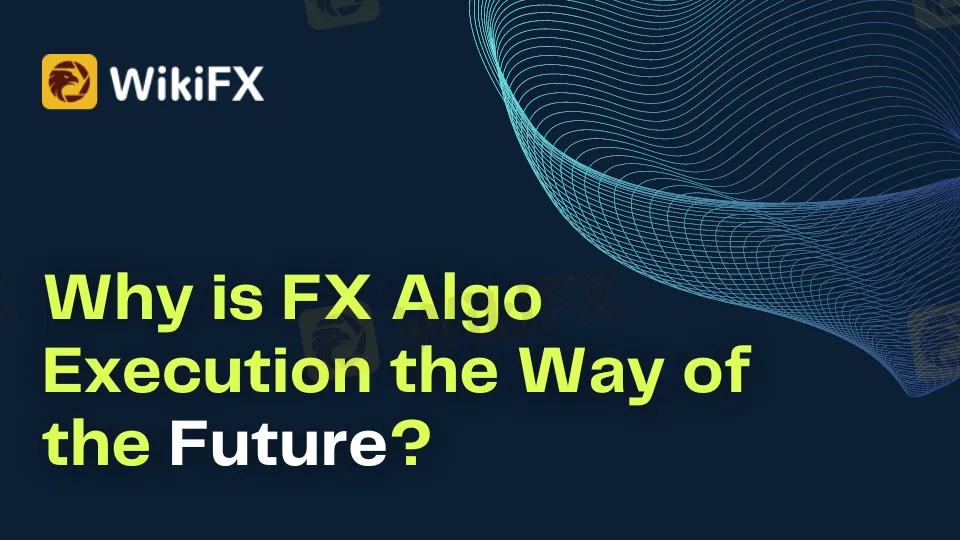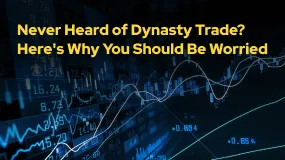简体中文
繁體中文
English
Pусский
日本語
ภาษาไทย
Tiếng Việt
Bahasa Indonesia
Español
हिन्दी
Filippiiniläinen
Français
Deutsch
Português
Türkçe
한국어
العربية
Why is FX Algo Execution the Way of the Future?
Abstract:Order slicing strategies, for example (splitting a big quantity order into many orders known as "child orders"), have progressed from very simple approaches (time-based or a number of divisions) to more complex ways that dynamically adjust to market circumstances.

Since its inception, algorithmic trading has grown in complexity.
According to the BIS (Bank for International Settlements) publication “FX execution algorithms and market functioning,” there have historically been three versions of algorithms:
Algorithms of the first generation: The first EAs had basic mechanical principles and were patterned by early equities market algorithms. The first FX EAs were designed primarily to automate traders' habit of breaking parent orders into child orders and adhering to stringent specified execution timetables. Their lack of expertise resulted in unique trading patterns that were easily detected by other market players.
Second-generation algorithms: In following FX EA iterations, suppliers strived to design EAs that limit market effect and prevent leaving unique trading patterns by including some randomization in the amount and timing of child orders. Nonetheless, these algorithms stayed largely on statically fixed timetables and were detectable using increasingly powerful forecasting and pattern recognition approaches.
Third-generation algorithms: By the mid-2010s, FX EAs were using complicated statistical models to drive algorithmic choices and respond more dynamically to changes in market circumstances, with the goal of decreasing market influence and signaling even further. These EAs assessed market conditions by using the rising availability of real-time market data and computational capacity.
What is the role of Expert Advisors (EA)?
EAs function by allowing you to define the criteria that will be used to find opportunities and start and exit positions - effectively employing a set of yes/no rules to trigger trading choices. You may either create your own EA or import one that has already been created.

EAs may execute complicated trading strategies by merging many yes/no criteria into a complex mathematical model, leveraging processing power to make judgments – and act on them – relatively immediately.
You may check more of WikiFX EA as well as the prices here: https://vps.wikifx.com/en/eashop.html
Why Does Algo Trading in Forex?
When choosing an algo approach, customers often have one of three goals in mind:
limit the market impact and save trading expenses
minimize market risk
and maximize execution certainty.
Clients have traditionally used algo methods primarily for big orders.
According to 46% of respondents in the Coalition Greenwich 2021 Market Structure & Trading Technology Study, algo trading is a “must do” in case huge orders work late.
Another 31% believe that is the most likely course of action. Also, huge orders that must be completed fast are scenarios in which algos should be considered.
According to 46% of respondents, using algos in such a case makes a lot of sense, and 15% are positive that algos should be utilized here.
In the event of minor orders, a stunning 75% said that the use of algos would be very unlikely.
These are the most often reported reasons and ways for using algo trading, although there are many more, and FX traders are not confined to these few.
Stay tuned for more Forex news.
Download the WikiFX App from the App Store or Google Play Store to stay updated on the latest news.

Disclaimer:
The views in this article only represent the author's personal views, and do not constitute investment advice on this platform. This platform does not guarantee the accuracy, completeness and timeliness of the information in the article, and will not be liable for any loss caused by the use of or reliance on the information in the article.
Read more

Never Heard of Dynasty Trade? Here's Why You Should Be Worried
Have you heard this name before? No , it’s time you do because staying unaware could cost you. This platform is currently active in the forex trading and has been linked to several suspicious activities. Even if you’ve never dealt with it directly, there’s a chance it could reach out to you through ads, calls, messages, or social media. That’s why it’s important to know the red flags in advance.

Want to Deposit in the EVM Prime Platform? Stop Before You Lose It ALL
Contemplating forex investments in the EVM Prime platform? Think again! We empathize with those who have been bearing losses after losses with EVM Prime. We don't want you to be its next victim. Read this story that has investor complaints about EVM Prime.

WEEKLY SCAM BROKERS LIST IS OUT! Check it now
If you missed this week's fraud brokers list and are finding it difficult to track them one by one — don’t worry! We’ve brought together all the scam brokers you need to avoid, all in one place. Check this list now to stay alert and protect yourself from fraudulent brokers.

Catch the Latest Update on BotBro & Lavish Chaudhary
BotBro, an AI-based trading platform, became popular in India in 2024—but for negative reasons. Its founder, Lavish Chaudhary, who gained a huge following by promoting it heavily on social media. Since then, he has become well-known, but for many controversies. Let’s know the latest update about Botbro & Lavish Chaudhary.
WikiFX Broker
Latest News
Is Your Forex Strategy Failing? Here’s When to Change
FSMA Warns That Some Firms Operate as Pyramid Schemes
Apex Trader Funding is an Unregulated Firm | You Must Know the Risks
Sigma-One Capital Scam? Investors Say They Can’t Withdraw Funds
Federal Reserve likely to hold interest rates steady despite pressure from Trump. Here's what that means for your money
WEEKLY SCAM BROKERS LIST IS OUT! Check it now
Intel drops 9% as chipmaker's foundry business axes projects, struggles to find customers
Palantir joins list of 20 most valuable U.S. companies, with stock more than doubling in 2025
Textiles to whisky: U.K.–India 'historic' deal is set to boost bilateral trade by over $34 billion a year
Thailand-Cambodia border clashes: Cambodia's economy has more to lose, analysts say
Currency Calculator


